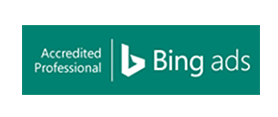We have taken a look at why page titles and descriptions are important along with the common problems we see time and time again so now it’s time to look at some best practices to wring every last bit of juice out of this very SEO’able aspect of your site.
1. Length
A simple one for starters – your page titles, if at all possible should not be longer than 70 characters. Keep them short and relevant so they look good in the search engine result pages (SERPs) and you will get more clicks. Likewise, your descriptions should come in at around 150 so you get the full description shown as intended (hopefully, google may take something else it sees as more relevant but…).
2. Keyword Placement
Keywords get more weighting at the beginning of the page title so in most cases your important keywords should always be at the front.
Primary Keyword - Secondary Keyword - Site Name
3. Branding
Your content is a way to get your brand out there and known amongst your target audience so you really should be getting that business name in the page titles. Keyword placement makes us favour the brand after the keyword but there are no hard and fast rules- you have to decide whether you want to use it on all or some, at the beginning or at the end.
Site Name - Keywords After Brand
Keywords Before Brand - Site Name
Just a Long Page Title with no Keywords
Now, the general consensus here is if you are a big, well known organisation, then you can put your brand at the front of your title and the brand recognition may win you more clicks. For your average business, we always want the site name at the back after our important keywords. Sometimes, if the content is not site specific, then, we can leave it off your blog posts for example and just use it on the sites static pages. Homepage again is somewhere you may have a custom rule and use it at the front.
The point here is that you should understand the implications and do what works best for each page. You can always work your brand into your meta description if it fits but generally, on non business related pages (I.E. not contact us.html) then it makes little sense to do so.
4. Structure and Organisation
Organising keywords across your pages can be a bit of a job but certainly one worth doing. To make life easier, and to ensure consistency across the site it can be useful to determine a structure for certain page types.
For static pages like contact Us:
Page Name - Site Name
So:
Contact Us | BowlerHat.co.uk
For Product Categories you may have:
Product Category | Site Name
So:
Green Widgets | WidgetShop.co.uk
For a product page you could build on the product category to feature the product name as well:
Product Name - Product Category | Site Name
So:
Shiny Green Widget - Green Widgets | WidgetShop.co.uk
The point of this is to determine a structure that lets you be consistent whilst working your keywords and branding in. It also saves you having to agonise over each and every page title and ensures consistency for your listings.
For your descriptions, a concise, clear description of the page content with the keywords worked in where natural will do the job just fine.
5. Honesty
This may seem like an odd one but honesty, amongst the keywords you choose for your page titles and descriptions really matter. There is simply no point adding ‘cheap’, ‘best’ or other terms if it is simply not the case. It can be easier to do the page titles after the optimised page copy has been created and you can get a feel for the page and use the most apt keywords in your title and description.
Tune Up your Page Titles and Descriptions
If this has got you thinking and you want to see a list of your page titles and meta description tags then open up a new tab and run the following query in Google. *
site:www.yoursitename.co.uk
* obviously, yoursitename.co.uk should be replaced with your own URL. ;o)
This will show you a list of your page titles and hopefully, it is not a horror story! If you see any of the common problems or think you can implement some of the best practices mentioned here then get cracking and you will reap the rewards. If you see anything that think is not as it should be, and you are using a consultant, then pick up the phone and start asking questions right away.
Summary
Still with us? Bravo! Did you read the earlier parts on why page titles and descriptions matter for SEO and common problems we see with them? Good, good. You are well on your way to better page titles, descriptions, rankings and traffic from a change you can manage yourself. Better still, if you are using a consultant or company to do your SEO, then you can rattle their cage a bit, check out the work being done and light a fire under their asses and get them working at the very best of their ability for you.
When it comes down to it, honest, descriptive page titles and descriptions with your keywords at the front of the title and in the description where it is natural to do so will win the race.
The title and description of this article are as follows and I do feel it will rank just fine.
SEO Best Practices for your Page Titles & Descriptions | Bowler Hat
Best SEO practices for your page titles and descriptions allowing you to get the best from these SEO and click through easy wins.
There is still a tendency to see SEO as some kind of arcane act, voodoo heebie jeebie madness – a dark art only whispered about in the dark corners of the Internet when the reality is often common sense – in the basics at least. I often see clients worrying about the intricacies of SEO and link building without having the basics dialled in which is just wasting time and money.
That’s a wrap
I hope this has helped some of you and even the SEO Savvy amongst you can always do with a refresh and looking back at the basics. As ever, if I can help or you have any questions drop a comment in the box below or hit me up on Twitter.






